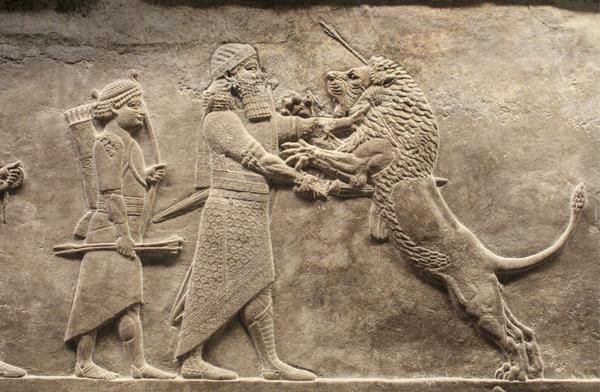Epistles: Biblical Bestiary: Lion

Powerful and terrifying beasts, lions enjoyed elevated status in the ancient world—both natural and cultural. In antiquity, lions (Panthera leo) roamed most of Africa and the wide strip from southeastern Europe in the west to India in the east, which includes all of the ancient Near East. Because of their sheer domination and magnificence, they were assigned royal qualities and were generally associated with kings and mythical heroes. Lion imagery was later appropriated by many European royal families for their coats of arms, and lions appear even in the flags of some modern democratic states.
Hunting was a royal sport in Mesopotamia, and the tradition of portraying Mesopotamian rulers as hunting lions emerged already in the late fourth millennium B.C.E. Beginning with Tiglath-pileser I (r. 1115–1077 B.C.E.), many Assyrian kings maintained game parks, where they would hunt captive animals, including lions. This pastime—and staged royal propaganda—was especially developed under the Neo-Assyrian kings (ninth–seventh centuries B.C.E.) and took place before an audience. Earlier New Kingdom Egyptian pharaohs are similarly depicted on monumental temple reliefs as hunting lions and even being accompanied by tamed lions on their hunting expeditions.
Already a library member? Log in here.
Institution user? Log in with your IP address.

